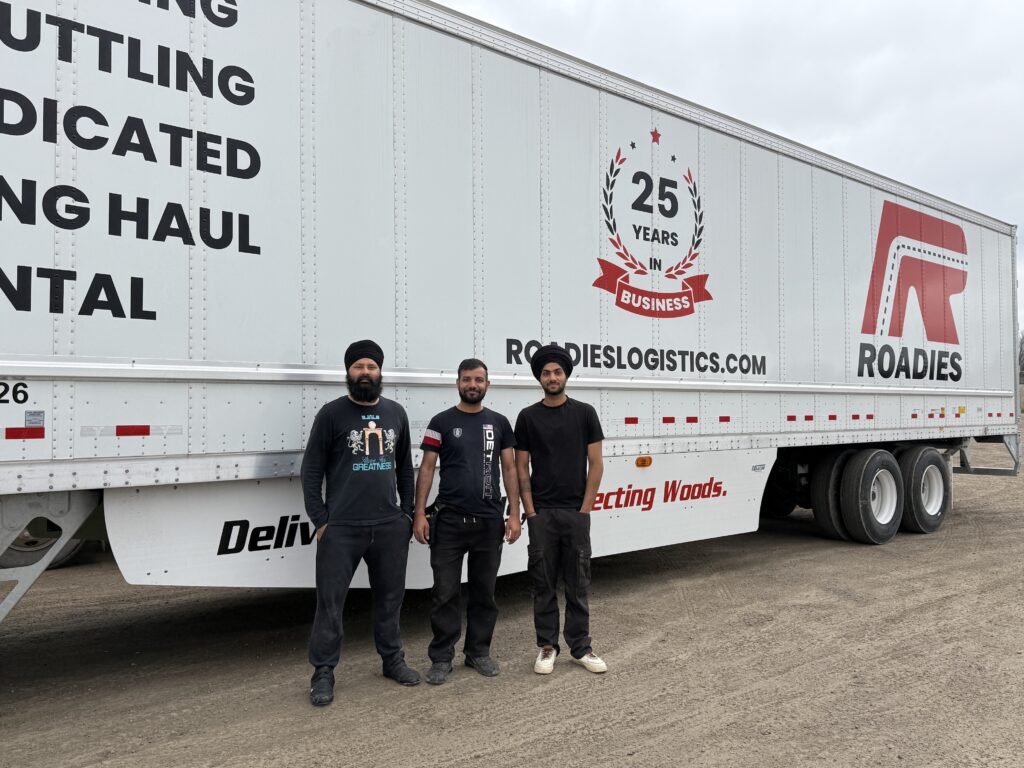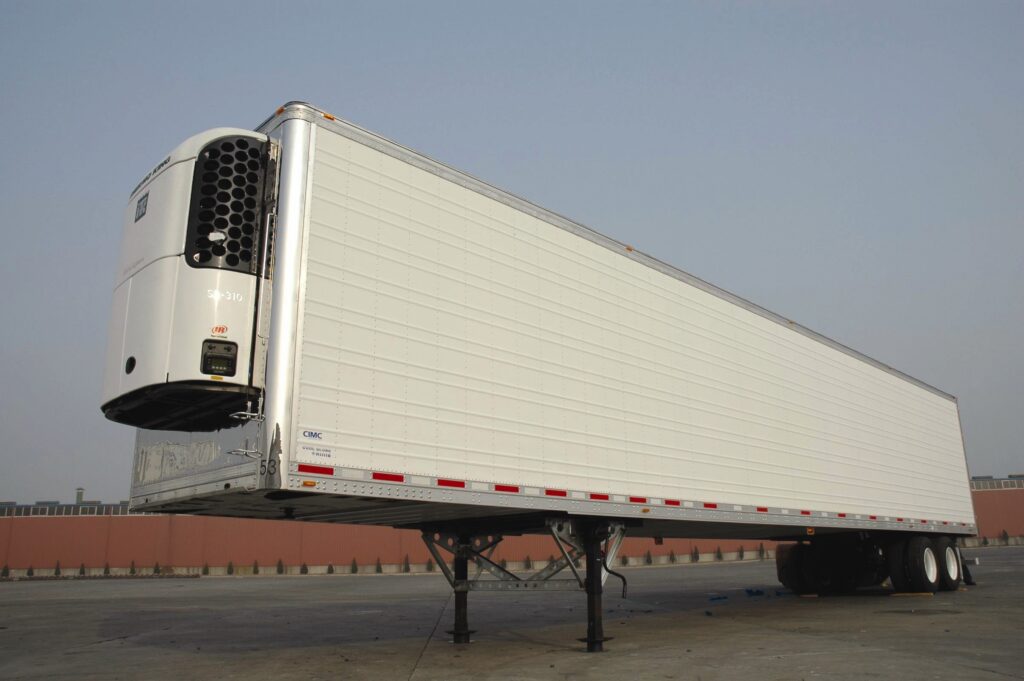Proper trailer load distribution is key to ensuring optimal trailer efficiency. Whether you’re transporting goods locally or across long distances, the way you distribute weight in your trailer can have a significant impact on fuel efficiency, safety, and the longevity of your equipment. At Transit Trailer, we understand how important it is to maintain proper weight distribution for your fleet. This guide will walk you through the importance of load distribution and how it can enhance your trailer’s performance.
Why Trailer Load Distribution Matters
When a trailer’s load is not evenly distributed, it can lead to a number of issues that affect its overall performance. Improper load distribution puts excess strain on the trailer’s tires, suspension, and axles, leading to increased wear and tear, higher fuel consumption, and potentially hazardous driving conditions.
By ensuring proper weight distribution, you can:
- Improve fuel efficiency: Properly distributing weight helps reduce rolling resistance and optimizes the trailer’s aerodynamics, which can lead to significant fuel savings over time.
- Extend the life of your trailer: Even weight distribution minimizes the stress on components like tires, brakes, and suspension, reducing maintenance costs and the risk of premature failures.
- Enhance safety: A well-balanced load improves the stability and handling of the trailer, reducing the risk of accidents due to tipping or loss of control.
- Understanding Proper Trailer Load Distribution
- Trailer load distribution refers to the way the cargo is arranged inside the trailer to ensure that weight is spread evenly across the axles. Uneven load distribution can cause the trailer to become unstable, resulting in issues such as overloading certain axles, excessive tire wear, or difficulty in steering.
Here are the basic principles to follow for proper weight distribution:
- Center of Gravity
The center of gravity of your load should ideally be placed as low and as close to the center of the trailer as possible. This helps ensure the trailer remains stable and balanced. If the center of gravity is too high or off-center, it can increase the risk of tipping, especially when navigating curves or making sharp turns. - Load Placement
Position the heaviest items first, typically towards the front of the trailer (near the axle), ensuring that the weight is spread evenly across the entire length of the trailer. Avoid placing all heavy items at the back, as this can cause the trailer to become too nose-heavy and difficult to handle. - Axle Load Balance
The weight should be evenly distributed between the front and rear axles to prevent overloading one axle, which can lead to faster wear and tear on tires and suspension. Ideally, you want about 60% of the load’s weight over the front axles and 40% over the rear. However, this can vary depending on the type of cargo and trailer design. - Use of Load Bars and Straps
Secure the load properly using load bars, straps, or tie-downs to prevent shifting during transit. Even with proper load placement, a cargo that isn’t secured properly can still shift, leading to imbalance during transportation. Using appropriate tie-downs will keep the load in place, ensuring the distribution remains intact throughout the journey.
The Benefits of Proper Load Distribution
When you optimize trailer load distribution, you can expect several key benefits that will not only improve efficiency but also contribute to overall cost savings and safety:
- Improved Fuel Efficiency
Improper load distribution increases rolling resistance, which forces the truck and trailer to work harder to maintain speed. Properly distributing the load reduces friction and helps improve fuel efficiency by making it easier for the vehicle to move the trailer. Over time, this results in significant savings on fuel costs. - Reduced Wear and Tear
By distributing weight evenly across the trailer, you help reduce excessive strain on tires, axles, and suspension systems. This leads to fewer breakdowns and a longer lifespan for trailer components, ultimately lowering maintenance costs and extending the life of your trailer. - Enhanced Safety
When a trailer is overloaded or unevenly loaded, it can be difficult to handle and more prone to accidents. Proper load distribution ensures that the trailer is stable, reducing the risk of rollovers or loss of control, especially in adverse weather conditions or when making sharp turns. - Compliance with Legal Weight Limits
Most jurisdictions have legal limits for how much weight can be carried on a trailer. Improper trailer load distribution can lead to exceeding these weight limits on individual axles, resulting in costly fines and penalties. Proper weight distribution ensures compliance with local regulations and helps you avoid legal issues.
Trailer Safety Tips for Load Distribution
To ensure you’re getting the most out of your trailer’s load distribution, here are some practical trailer safety tips to follow:
- Weigh your load: Before setting out on a journey, make sure to weigh your load at a certified scale to ensure it complies with weight limits. This helps prevent overload and ensures an even distribution of weight.
- Balance the load: Place the heaviest items over the axles and avoid overloading the trailer at the front or rear. This improves stability and reduces the likelihood of tipping.
- Use proper securing methods: Always secure your load with the appropriate straps and tie-downs to prevent movement during transit. Shifting loads can cause imbalance and increase the risk of accidents.
- Perform regular inspections: Regularly inspect your trailer’s suspension, tires, and brakes to ensure that they’re in good condition. Proper load distribution can help reduce the wear on these components, but regular maintenance is still essential.
Boost Your Trailer Efficiency with Transit Trailer
Optimizing your trailer load distribution is one of the most effective ways to improve efficiency, reduce operating costs, and enhance safety for your business. At Transit Trailer, we understand the critical role that trailer efficiency plays in your business operations. Whether you’re hauling dry goods, refrigerated cargo, or heavy machinery, ensuring proper weight distribution is a simple but powerful step toward improving the longevity and performance of your fleet.
For more trailer safety tips and efficient load distribution practices, feel free to reach out to Transit Trailer. Our expert team is here to assist you with choosing the right trailer for your needs and providing guidance on best practices for maintaining optimal efficiency.








